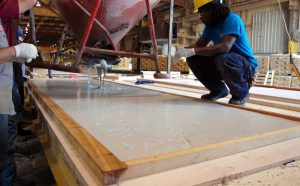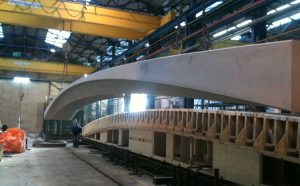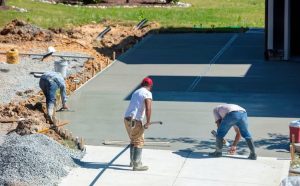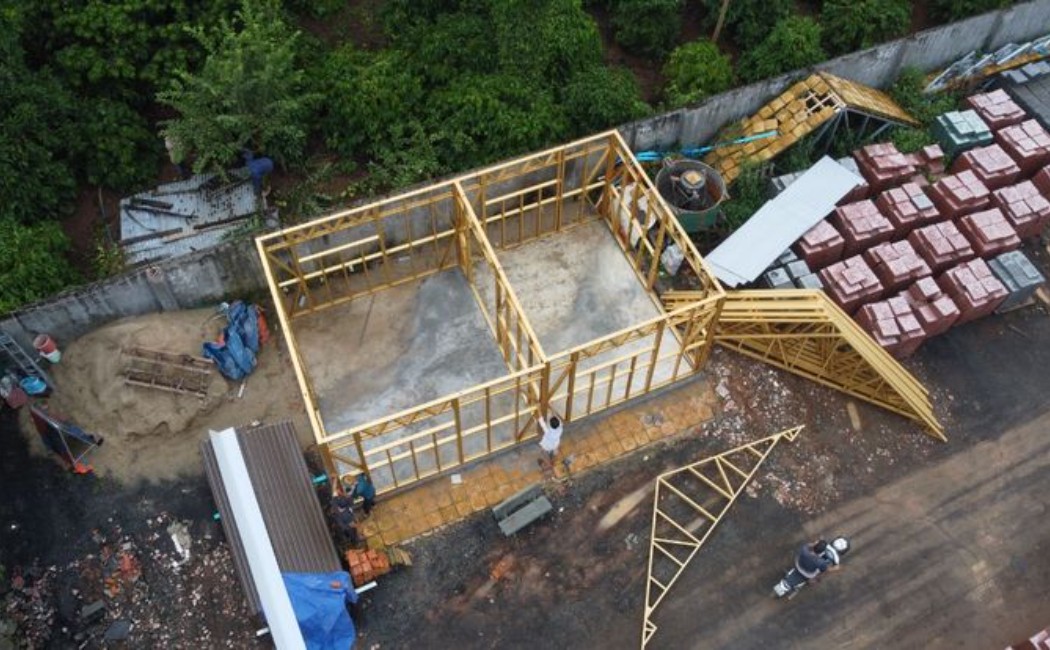Concrete has always been the backbone of the construction industry. Even in today’s modern world, concrete is being used in every construction, from sidewalks, driveways, to bridges and tall standing skyscrapers. But with time, the design demands, sustainability standards, and consumers’ expectations continue to evolve, so does the material. Ultra High Performance Concrete (UHPC) is at the forefront of this shift, offering exceptional strength, resilience, and design flexibility that traditional mixes can’t match.
For an engineer, architect, or contractor, the next big construction UHPC should be your first choice. UHPC provides innovative concrete solutions that can redefine your project outcomes. In this Asphalt and Concrete guide, we will explore UHPC’s properties, benefits, and practical applications, along with expert advice on how to make the most of this cutting-edge material.
What is Ultra High Performance Concrete?
Before getting into the performance of UHPC concrete, it’s crucial to understand it. Ultra High Performance Concrete is a specialized class of high-strength concrete known for its superior mechanical and durability properties. Unlike the traditional mixes, UHPC is engineered with fiber-reinforced concrete technology, combining steel or synthetic fibers that drastically improve tensile strength, flexural capacity, and crack resistance.
UHPC falls under the umbrella of advanced concrete materials. Its compressive strength typically exceeds 150 MPa (megapascals), significantly higher than standard concrete, making it one of the strongest construction materials available today. This blend of advanced concrete technology and innovative concrete materials creates a performance profile that sets UHPC apart in modern concrete innovations.
How Is UHPC Changing The Industry?
1. High Durability Concrete
UHPC is highly durable; the traditional mixes are vulnerable to water penetration, freeze-thaw cycles, and chemical attack. UHPC’s dense microstructure minimizes porosity, resulting in long-lasting concrete structures that withstand even the harshest environmental conditions. This durability makes it ideal for bridges, marine environments, and heavily trafficked urban infrastructure.
2. Performance-Based Concrete
UHPC is rooted in performance-based concrete principles, unlike conventional concrete, which relies on prescriptive design methods. That means it’s designed and tested to meet specific project requirements, whether that’s superior compressive strength, impact resistance, or sustainability benchmarks. This approach gives engineers more control and confidence in achieving reliable outcomes.
3. UHPC Design Flexibility
Architects and engineers often face trade-offs between strength and aesthetics. UHPC eliminates that compromise. Its high performance enables thinner sections, longer spans, and more intricate shapes without sacrificing durability. This UHPC design flexibility opens doors for sleek facades, lightweight panels, and artistic structural elements that push the boundaries of creativity.

Benefits Of UHPC
Adopting UHPC in your project brings measurable advantages:
- Exceptional strength: Provides high-strength concrete solutions far beyond traditional materials.
- Crack resistance: Thanks to its fiber-reinforced concrete composition, it resists micro-cracking.
- Sustainability: Classified as sustainable concrete technology, UHPC reduces lifecycle costs and resource use.
- Lower maintenance: Fewer repairs and replacements are needed over time, saving both money and resources.
- Aesthetic potential: Enables innovative concrete solutions for complex designs.
Expert Advice: Where to Use UHPC
UHPC isn’t just a stronger form of concrete; it’s a complete UHPC design solution for projects requiring both performance and innovation. Here are some key UHPC applications:
1. UHPC for Infrastructure
Bridges, tunnels, and highways often face demanding loads and exposure to harsh climates. UHPC’s high durability concrete properties make it perfect for structural elements like precast bridge decks, joints, and overlays. Many departments of transportation now adopt UHPC to extend service life while lowering maintenance costs.
2. Architectural Projects
With its UHPC design flexibility, architects can create lightweight yet strong cladding panels, sculptural forms, and facades. The fine surface finish and moldability of UHPC enable modern aesthetics that complement contemporary architecture.
3. Marine and Coastal Environments
Saltwater corrosion is a major concern for traditional concrete. UHPC’s dense matrix offers unmatched resistance to chloride penetration, making it ideal for piers, seawalls, and offshore platforms.
4. Industrial and Defense Applications
The high-strength concrete and impact resistance of UHPC make it suitable for protective barriers, blast-resistant structures, and specialized defense-related infrastructure.

UHPC Construction: Practical Considerations
While the advantages are clear, adopting UHPC requires an informed approach. Here are some expert insights for ensuring successful UHPC construction:
-
Mix Design and Materials
UHPC relies on carefully proportioned ingredients, including fine powders, silica fume, and innovative concrete materials like steel fibers. Partnering with suppliers experienced in advanced concrete technology ensures consistent quality.
-
Workability and Placement
UHPC is highly flowable but requires attention to placement techniques. Specialized formwork and vibration methods may be necessary depending on the application.
-
Curing Practices
Proper curing is critical to achieving UHPC’s full performance potential. Steam curing, for example, can accelerate strength development and enhance durability.
-
Cost-Benefit Balance
While UHPC has higher upfront costs than conventional mixes, its UHPC durability and reduced maintenance make it cost-effective over the lifecycle of a structure. Evaluate long-term savings, not just initial expenses.
Sustainable Concrete Technology: The Green Advantage
Sustainability is no longer optional; it’s essential. UHPC plays an important role in sustainable concrete technology because of its longevity and efficiency:
- Reduced material usage: Because UHPC is so strong, smaller quantities are needed for the same structural performance.
- Lower maintenance: Structures last longer, reducing the environmental impact of frequent repairs.
- Resource efficiency: The ability to design thinner, lighter components reduces raw material demand.
By extending the life of infrastructure and reducing carbon-intensive activities like demolition and reconstruction, UHPC supports a greener construction ecosystem.

UHPC Expert Advice: Keys to Success
If you’re considering UHPC for your next project, keep these expert tips in mind:
- Collaborate early: Involve material specialists and structural engineers from the design stage.
- Precision plan: UHPC is a performance-based concrete that rewards accuracy in mix design and curing.
- Think long-term: Focus on lifecycle value rather than upfront costs.
- Leverage aesthetics: Explore the UHPC design solutions that combine strength with visual impact.
The Future of UHPC in Construction
As cities grow and infrastructure ages, the demand for materials that can deliver UHPC benefits, such as strength, durability, and sustainability, will only increase. With continued research in advanced concrete technology, the possibilities for UHPC will expand, paving the way for lighter, stronger, and more sustainable structures worldwide. For forward-thinking contractors, architects, and engineers, UHPC represents more than just another option; it’s a transformational step in adopting innovative concrete solutions that meet the demands of the future.
Conclusion
Ultra High Performance Concrete (UHPC) is more than a high-strength material; it’s a revolution in innovative concrete materials. From UHPC for infrastructure to modern architectural marvels, its combination of UHPC durability, design flexibility, and sustainable concrete technology makes it a compelling choice for projects that demand more.
Asphalt and concrete is a trusted and reliable company. By choosing our building material, you are investing in long-lasting concrete structures that save costs, minimize environmental impact, and unlock modern concrete innovations. With the right planning, collaboration, and expert guidance, we can elevate the performance and design of your structures. What keeps you waiting? Choose our sustainable concrete services for your next project.
Frequently Asked Questions
Does UHPC offer design flexibility?
Yes. Thanks to its strength and fiber reinforcement, UHPC allows for thinner elements, longer spans, and complex geometries, providing architects with modern concrete innovations that combine performance and aesthetics.
How does UHPC support sustainability?
UHPC reduces material use by enabling thinner sections, lowers the need for frequent repairs, and extends the service life of structures, making it a leading choice in sustainable concrete technology.
Is UHPC cost-effective?
While the initial cost of UHPC is higher than that of traditional concrete, its durability significantly lowers maintenance and repair needs. Over time, it becomes a high-strength concrete solution with excellent lifecycle savings.
How does UHPC differ from conventional concrete?
Unlike traditional concrete, UHPC features a dense microstructure, added fibers, and performance-based concrete design principles. This results in higher strength, reduced cracking, better sustainability, and long-lasting concrete structures.
How long do UHPC structures last?
UHPC can extend structural lifespans to 75–100+ years, far exceeding conventional concrete, making it ideal for long-lasting concrete structures in critical infrastructure and architectural projects.

